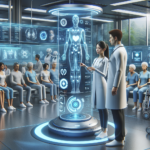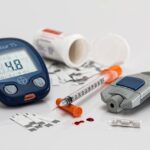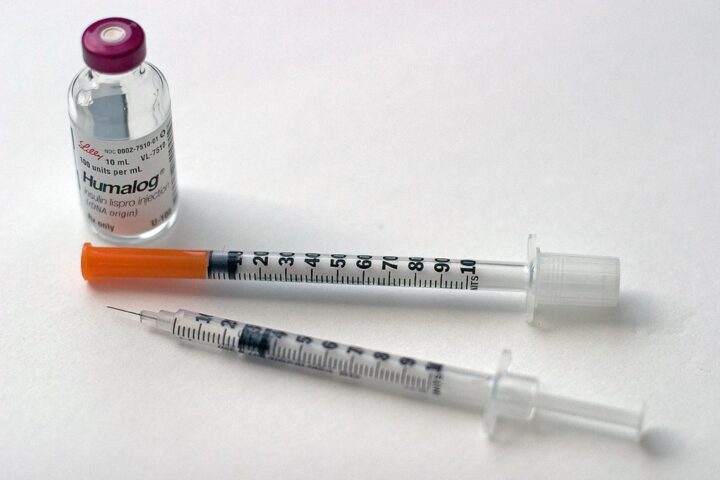
Revolutionizing Healthcare: The Impact of Artificial Intelligence on Health Industry and Cancer Treatment
March 4, 2024
Comprehensive Guide to Managing Type 2 Diabetes: Strategies, Medications, and FAQs
March 6, 2024The Comprehensive Guide to Blood Sugar Regulation: Insights into Insulin, Glucagon, and Metabolic Harmony
Introduction:
Blood sugar regulation is a fundamental aspect of human physiology, orchestrated by a dynamic interplay between hormones, primarily insulin, and glucagon. In this extensive guide, we delve into the intricate mechanisms governing blood sugar regulation, exploring the roles of insulin and glucagon in maintaining metabolic homeostasis. From their molecular functions to their clinical implications in conditions like diabetes, this comprehensive overview aims to provide a thorough understanding of the complexities underlying blood sugar dynamics.
Understanding Blood Sugar Regulation:
The Basics of Blood Sugar Metabolism:
Blood sugar, or glucose, is the primary energy source for cells, particularly crucial for organs like the brain and muscles. When we consume carbohydrates, they are broken down into glucose, which enters the bloodstream. However, the body must tightly regulate blood sugar levels to prevent harmful fluctuations that can jeopardize cellular function.
Hormonal Regulation:
The pancreas, a vital organ nestled behind the stomach, plays a central role in blood sugar regulation. Within the pancreas, specialized clusters of cells known as islets of Langerhans house two key players: beta cells, which secrete insulin, and alpha cells, responsible for glucagon production.
The Role of Insulin:
Mechanism of Action:
Insulin acts as a molecular key, facilitating the entry of glucose into cells. Upon binding to insulin receptors on cell surfaces, insulin triggers a cascade of intracellular events that promote glucose uptake. This process is essential for fueling cellular metabolism and maintaining energy balance.
Regulation of Blood Sugar:
Insulin serves as the body’s primary regulator of blood sugar levels, particularly following meals when glucose levels surge. In response to elevated blood sugar, beta cells release insulin, prompting cells to absorb glucose for energy production or storage. Through its actions on the liver, muscle, and adipose tissue, insulin helps maintain blood sugar within a narrow physiological range.
Implications in Diabetes:
In individuals with diabetes, defects in insulin production or action disrupt blood sugar regulation, leading to chronically elevated levels—a hallmark feature of the disease. Type 1 diabetes, characterized by autoimmune destruction of beta cells, necessitates exogenous insulin administration for survival. In contrast, type 2 diabetes involves insulin resistance and impaired insulin secretion, often requiring multifaceted treatment approaches.
The Role of Glucagon:
Counterregulatory Hormone:
Glucagon acts as insulin’s counterpart, exerting opposing effects on blood sugar regulation. Secreted by pancreatic alpha cells in response to low blood sugar, glucagon stimulates the liver to release glucose into the bloodstream, thereby raising blood sugar levels—a crucial defense mechanism against hypoglycemia.
Gluconeogenesis and Glycogenolysis:
Glucagon exerts its effects primarily on the liver, where it promotes two key processes: gluconeogenesis and glycogenolysis. Gluconeogenesis involves the synthesis of glucose from non-carbohydrate precursors, while glycogenolysis entails the breakdown of stored glycogen into glucose. Together, these pathways ensure a steady supply of glucose to meet metabolic demands.
Maintaining Metabolic Homeostasis:
Dynamic Equilibrium:
The intricate interplay between insulin and glucagon maintains metabolic homeostasis, ensuring that cells receive an adequate supply of glucose while preventing excessive fluctuations in blood sugar levels. This delicate balance is essential for sustaining vital physiological functions and adapting to changing metabolic demands.
Regulatory Feedback Loops:
Feedback mechanisms fine-tune insulin and glucagon secretion in response to fluctuations in blood sugar levels. High blood sugar triggers insulin release, promoting glucose uptake and storage. In contrast, low blood sugar stimulates glucagon secretion, mobilizing glucose from internal stores—a finely orchestrated dance orchestrated by the endocrine system.
Clinical Implications:
Diabetes Mellitus:
Diabetes mellitus represents a spectrum of metabolic disorders characterized by dysregulated blood sugar metabolism. Type 1 diabetes results from autoimmune destruction of pancreatic beta cells, necessitating lifelong insulin replacement therapy. In contrast, type 2 diabetes typically involves insulin resistance and impaired insulin secretion, often requiring a combination of lifestyle modifications, oral medications, and insulin therapy.
Hypoglycemia and Hyperglycemia:
Hypoglycemia, or low blood sugar, poses immediate risks and requires prompt intervention to prevent adverse outcomes such as seizures or loss of consciousness. In contrast, hyperglycemia, or high blood sugar, can lead to chronic complications such as cardiovascular disease, neuropathy, and nephropathy if left uncontrolled, underscoring the importance of vigilant blood sugar management.
Therapeutic Interventions:
Insulin Therapy:
Insulin therapy remains the cornerstone of management for individuals with type 1 diabetes, aimed at restoring physiological insulin levels and preventing hyperglycemia. Various insulin formulations, including rapid-acting, short-acting, intermediate-acting, and long-acting preparations, offer flexibility in achieving glycemic control tailored to individual needs.
Glucagon Emergency Kits:
Glucagon emergency kits provide a critical lifeline for individuals at risk of severe hypoglycemia, offering a rapid means of raising blood sugar levels in emergencies. Administered via injection or nasal spray, glucagon stimulates hepatic glucose release, swiftly reversing hypoglycemic episodes and averting potential crises.
Conclusion:
In conclusion, insulin and glucagon represent integral components of the intricate machinery governing blood sugar regulation. Their coordinated actions orchestrate a symphony of metabolic processes aimed at maintaining metabolic equilibrium and sustaining cellular function. From physiological homeostasis to clinical therapeutics, understanding the roles of insulin and glucagon is paramount for optimizing metabolic health and mitigating the risks associated with dysregulated blood sugar metabolism.
FAQS
- What is blood sugar regulation, and why is it important?
Blood sugar regulation refers to the maintenance of glucose levels within a narrow range in the bloodstream. This process is crucial for providing energy to cells and ensuring the proper functioning of organs, particularly the brain. Imbalances in blood sugar levels can lead to serious health complications, making regulation essential for overall well-being.
- What role do insulin and glucagon play in blood sugar regulation?
Insulin and glucagon are hormones produced by the pancreas that work together to regulate blood sugar levels. Insulin facilitates the uptake of glucose by cells, lowering blood sugar levels, while glucagon stimulates the liver to release stored glucose into the bloodstream, raising blood sugar levels when they are too low.
- What causes imbalances in blood sugar levels?
Imbalances in blood sugar levels can occur due to various factors, including dietary habits, physical activity levels, underlying health conditions such as diabetes, hormonal fluctuations, and medication use. Poor diet, sedentary lifestyle, stress, and genetics can also contribute to blood sugar dysregulation.
- What are the symptoms of high and low blood sugar levels?
Symptoms of high blood sugar (hyperglycemia) may include increased thirst, frequent urination, fatigue, blurred vision, and slow wound healing. On the other hand, low blood sugar (hypoglycemia) can cause symptoms such as dizziness, confusion, sweating, trembling, and irritability. Severe hypoglycemia can lead to loss of consciousness or seizures.
- How is diabetes diagnosed and managed?
Diabetes is diagnosed through blood tests that measure fasting blood sugar levels, oral glucose tolerance, or glycated hemoglobin (HbA1c) levels. Management of diabetes typically involves lifestyle modifications (such as diet and exercise), oral medications (for type 2 diabetes), and insulin therapy (for type 1 and some cases of type 2 diabetes). Regular blood sugar monitoring and medical supervision are essential for effective management.
- When should glucagon emergency kits be used?
Glucagon emergency kits are used in situations of severe hypoglycemia (low blood sugar) when an individual with diabetes becomes unconscious or unable to swallow food or drink. Glucagon administration can quickly raise blood sugar levels, preventing further complications. Family members, caregivers, or individuals with diabetes need to be trained in how to use glucagon kits effectively.
- Can blood sugar imbalances be prevented?
While certain risk factors for blood sugar imbalances, such as genetics and underlying health conditions, may be beyond control, adopting a healthy lifestyle can significantly reduce the risk. This includes eating a balanced diet rich in whole grains, fruits, vegetables, and lean proteins, engaging in regular physical activity, maintaining a healthy weight, managing stress, and avoiding excessive alcohol consumption and smoking.
- What are the long-term complications of poorly controlled blood sugar levels?
Chronic elevation of blood sugar levels over time can lead to various complications, including cardiovascular disease, neuropathy (nerve damage), nephropathy (kidney damage), retinopathy (eye damage), and foot problems (due to poor circulation and nerve damage). Therefore, maintaining optimal blood sugar control is essential for preventing these complications and preserving overall health.


